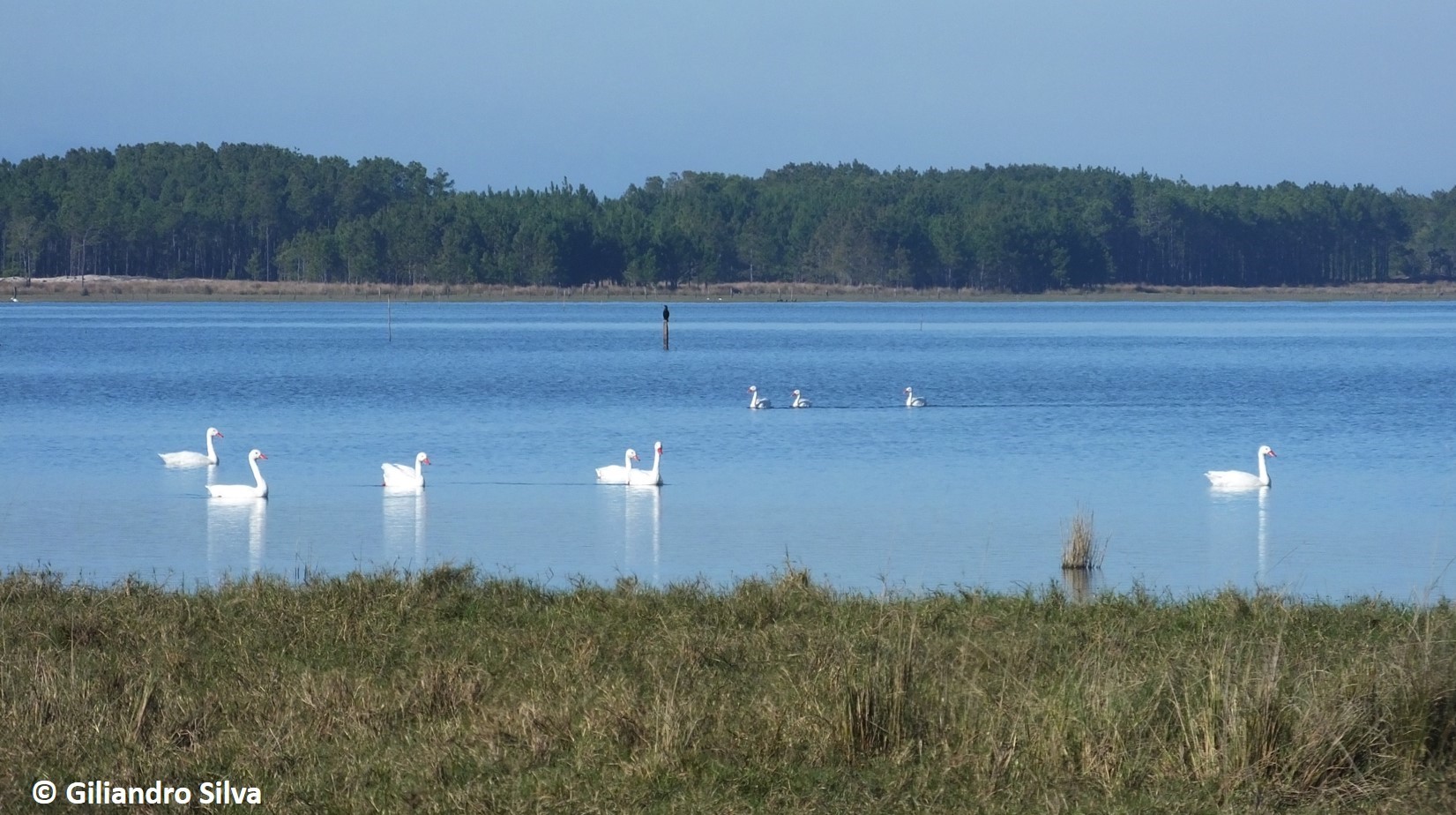Waterbirds have an important ecological function as vectors of plant dispersal between different wetlands. In the Neotropical region, there is very limited information about this dispersal. In southern Brazil, seed dispersal by endozoochory was studied by five waterfowl, including Brazilian teal, yellow-billed teal, ringed teal, coscoroba swan, and whitefaced whistling-duck. Over 2000 diaspores were recovered from 40 different plants, including seeds of 37 angiosperms, and diaspores of mosses, ferns and charophytes. Seeds of the threatened grass Zizaniopsis bonariensis were the most abundant. The species richness and abundance of seeds dispersed varied between bird species, and between the cold and warm seasons, with a strong interaction between these two factors. 12 plant species were indicators of particular bird species or seasons. The largest bird, the coscoroba, dispersed a larger proportion of relatively large seeds. The coscoroba and the smallest bird (ringed teal) differed from each other, and from the other three ducks, in the community composition of plants dispersed. All five species make daily movements between wetlands and are widely distributed in South America, ranging from the sedentary Brazilian teal to the long-distance migratory coscoroba. informacion[at]ebd.csic.es: Silva et al. (2020) Seed dispersal by neotropical waterfowl depends on bird species and seasonality. Freshwater Biology https://doi.org/10.1111/fwb.1361
https://onlinelibrary.wiley.com/doi/10.1111/fwb.13615

 Las altas temperaturas están provocando que las lagunas y las marismas de Doñana pierdan agua rápidamente
Las altas temperaturas están provocando que las lagunas y las marismas de Doñana pierdan agua rápidamente




